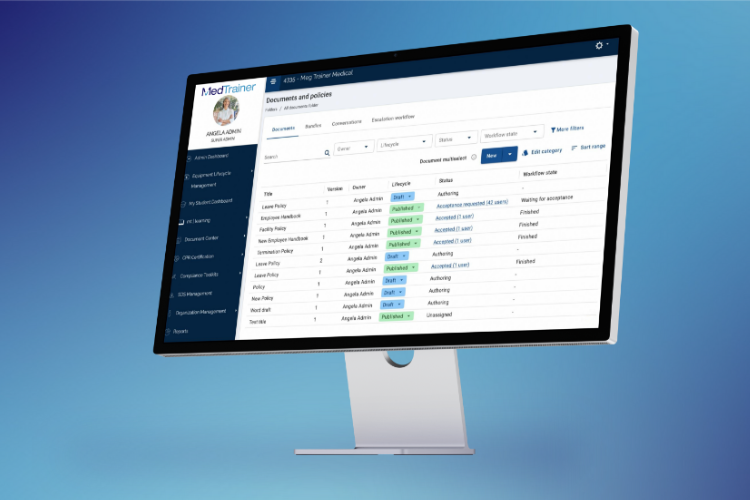One of the primary goals of healthcare organizations is to protect the health and safety of its patients. For the organization itself, compliance programs are the guardians that can help potentially prevent medical errors and regulatory violations, and mitigate other compliance risks.
So, how do compliance programs protect healthcare? In this blog, I’ll discuss the structured framework for managing risks and maintaining the highest standards of care and integrity in the healthcare industry.
What is Healthcare Compliance?
Healthcare compliance is following and meeting the laws, regulations, and ethical standards that govern the healthcare industry. It upholds healthcare organizations and professionals to standards and guidelines that protect patient safety, data privacy, and medical practices. Maintaining compliance is essential for operating within the legal framework and providing high-quality patient care.
Compliance Programs: Healthcare’s Guardian Angels
Here are several ways in which compliance programs help safeguard the healthcare industry:
- Prevent Fraud and Abuse: Compliance programs help to identify and potentially prevent fraudulent activities such as billing for services not rendered, upcoding, or submitting false claims. By ensuring accurate billing and coding practices, compliance programs protect healthcare organizations from legal and financial repercussions.
- Ensure Patient Privacy: Compliance programs – with the Health Insurance Portability and Accountability Act (HIPAA) at the top – help safeguard patient privacy and data security. They establish guidelines for the proper handling of patient information, electronic health records (EHRs), and other sensitive data, reducing the risk of data breaches and unauthorized access.
- Emphasize Regulatory Adherence: Healthcare is a heavily regulated industry, with numerous federal and state regulations governing its operations. Compliance programs help healthcare organizations stay current with these regulations and meet legal requirements in areas such as licensure, accreditation, and quality of care.
- Reduce Medical Errors: Compliance programs often involve recordkeeping and maintaining policies and procedures aimed at patient safety practices. These programs can also help identify and mitigate risks associated with medical errors that can hinder the delivery of high-quality care.
- Support Ethical Practices: Programs can help promote ethical behavior within organizations by establishing a code of conduct and ethics.
- Boost Risk Management: By identifying and addressing potential risks and liabilities, compliance programs help mitigate legal and financial risks. These proactive approaches can lead to cost savings and protect the organization’s reputation.
- Offer Training and Education: Ongoing training and education help healthcare employees and providers remain aware of the latest regulations and best practices. Thus, this reduces the chances of inadvertent non-compliance.
- Develop Internal Reporting Mechanisms: Many compliance programs include mechanisms for employees to anonymously report incidents or violations. This encourages whistleblowing and helps organizations identify and address issues before they escalate.
- Conduct External Audits and Monitoring: Compliance programs often involve regular audits and monitoring to ensure adherence to strict policies and regulations. These audits can uncover compliance issues early, and if necessary, the organization can take corrective action.
- Provide Legal and Financial Protection: Perhaps most importantly, compliance programs help healthcare organizations avoid legal penalties and financial consequences as a result of non-compliance if identified early. Fines, lawsuits, and damaged reputations can be costly, and compliance programs are a proactive way to help mitigate these risks.
Use Compliance Technology To Protect Your Organization
Cloud-based tools assist employees with the ability to access the latest information — whether it is a refresher on training or downloading an organizational policy.
Online technology can also increase the efficiency of your compliance team so you can spend less time on routine tasks like reminding staff to complete training. Instead, you can spend time on risk management activities, such as analyzing incident reports for trends and root cause analyses.
Ready to check out the #1 Healthcare Compliance Software according to G2 reviewers? See MedTrainer in action.

